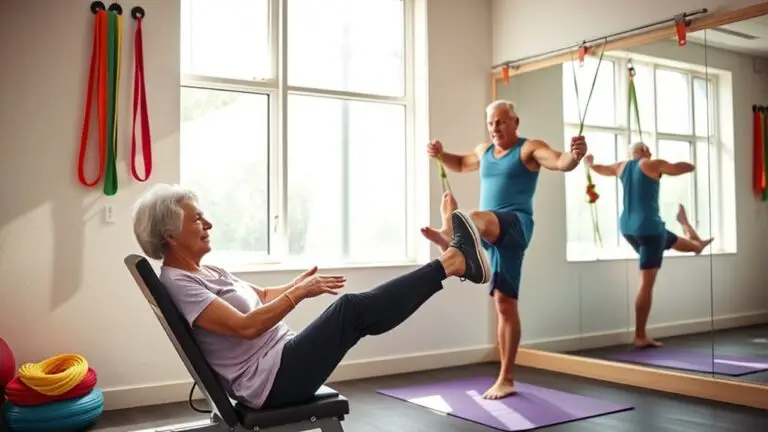The Best Resistance Training Methods for Older Adults
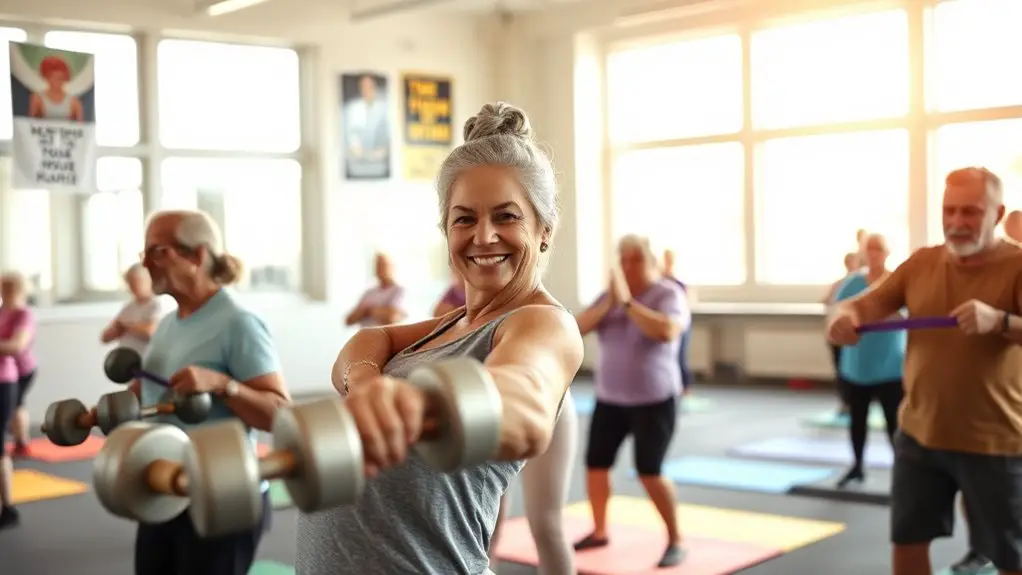
The best resistance training methods for older adults include bodyweight exercises, resistance bands, and weight machines. These options provide effective strength-building while prioritizing safety. Bodyweight exercises enhance balance and flexibility, while resistance bands are versatile and easy to use. Weight machines offer stability, making them ideal for beginners. Incorporating these methods can preserve muscle mass, boost bone density, and improve overall health. Discover more about creating a balanced routine that suits your needs and fitness level.
Understanding Resistance Training
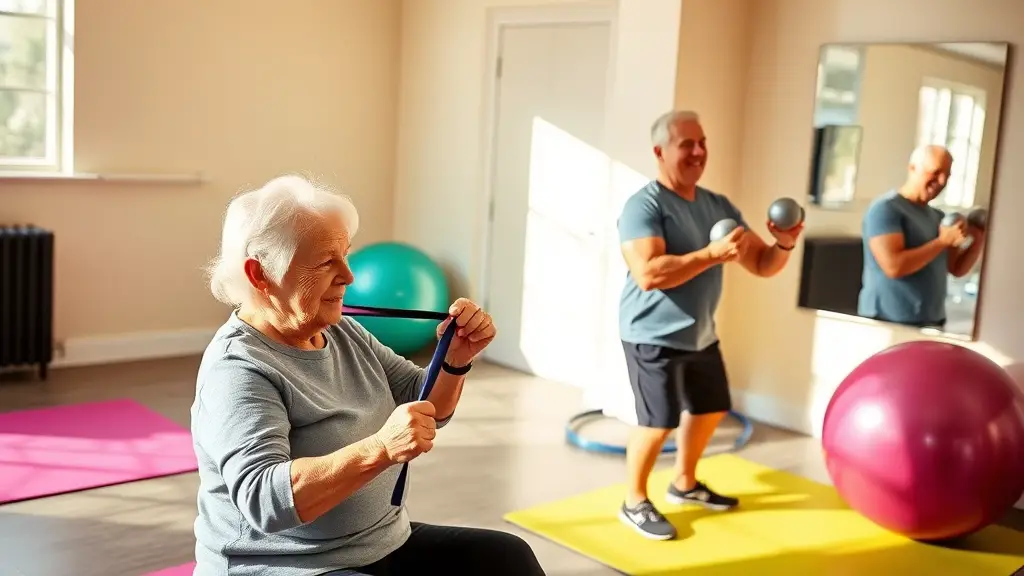
Understanding resistance training is vital for older adults seeking to maintain or improve their physical health. This form of exercise involves working against an external force, which can be weights, resistance bands, or even your body weight. Engaging in resistance training is essential for muscle preservation, as it helps counteract the natural decline in muscle mass that occurs with aging. By regularly incorporating this type of training, you can support your body’s ability to perform daily activities with greater ease and strength.
Moreover, resistance training contributes considerably to joint health. Strengthening the muscles around your joints provides better support, which can reduce the risk of injuries and alleviate pain associated with conditions like arthritis. To maximize these benefits, it’s important to focus on proper techniques and gradually increase the intensity of your workouts. This guarantees your body adapts safely while enhancing your overall physical well-being.
Benefits of Resistance Training for Older Adults
Resistance training offers numerous benefits tailored specifically for older adults, enhancing both physical and mental well-being. One of the primary advantages is muscle preservation, which becomes increasingly important as you age. Engaging in regular resistance exercises helps maintain muscle mass, counteracting the natural decline that occurs with aging. This muscle preservation not only supports mobility but also contributes to improved functional strength, allowing you to perform daily activities with greater ease and independence.
Moreover, resistance training can enhance bone density, reducing the risk of fractures—a critical concern for older individuals. It also promotes better balance and coordination, lowering the likelihood of falls. Mentally, the discipline and achievement associated with resistance training can boost your mood and cognitive function, fostering a sense of accomplishment. Ultimately, incorporating resistance training into your routine can greatly improve your quality of life, empowering you to remain active and engaged in your community.
Types of Resistance Training
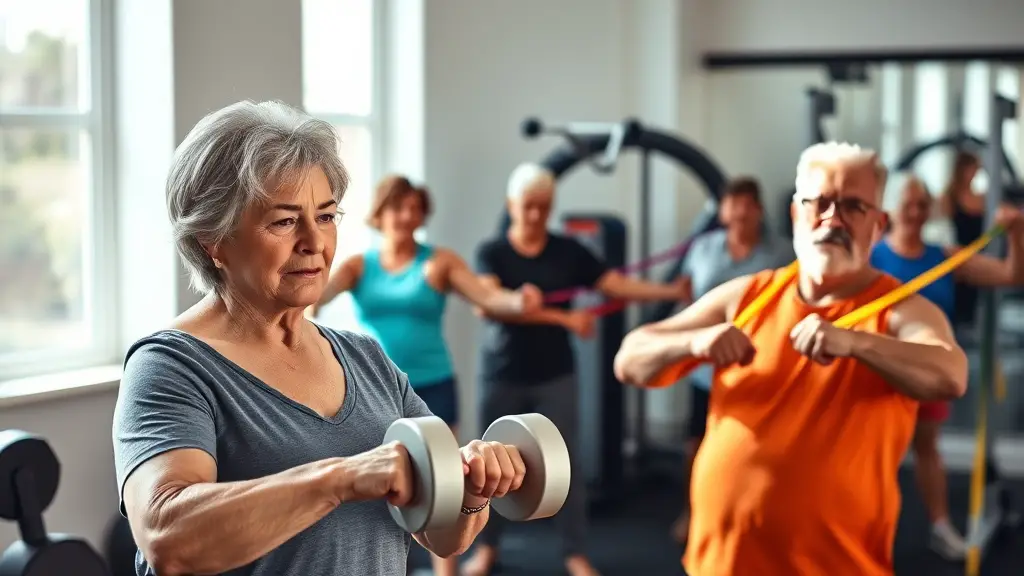
Whether you’re new to exercise or returning after a break, there are several effective types of resistance training that can suit your needs as an older adult. One common form is machine resistance, which provides a controlled environment for strength training. Machines help target specific muscle groups while minimizing the risk of injury, making them ideal for beginners or those with mobility limitations.
Another effective option is elastic resistance, which utilizes resistance bands or tubes to enhance strength training. These tools are versatile, allowing you to perform a wide range of exercises that can be adjusted to your fitness level. Elastic resistance also promotes functional strength, as it mimics everyday movements.
Incorporating both machine and elastic resistance into your routine can optimize your strength gains, improve balance, and enhance overall physical function, supporting your health as you age.
Bodyweight Exercises
Bodyweight exercises offer numerous benefits for older adults, including improved strength, balance, and flexibility. These exercises require no equipment and can be easily modified to suit your fitness level. Let’s explore some recommended bodyweight exercises that can enhance your resistance training routine.
Benefits of Bodyweight Training
Although many people may think of weights when considering strength training, bodyweight exercises offer a unique and effective way for older adults to enhance their physical fitness. The bodyweight benefits are significant, particularly in promoting functional strength essential for daily activities.
Consider the following advantages:
- Improved Balance: Enhances stability, reducing the risk of falls.
- Increased Mobility: Promotes flexibility and range of motion, supporting everyday movements.
- Convenience: Requires no equipment, allowing you to train anywhere.
- Low Impact: Reduces stress on joints, making it safer for aging bodies.
Incorporating bodyweight training into your routine not only builds strength but also contributes to overall health and independence as you age.
Recommended Bodyweight Exercises
Incorporating a variety of bodyweight exercises into your routine can greatly enhance strength and stability for older adults. Squat variations, like wall squats or chair squats, help improve lower body strength while minimizing joint strain. These exercises engage major muscle groups, promoting balance and mobility. Push-up modifications, such as knee push-ups or incline push-ups against a sturdy surface, allow you to build upper body strength effectively without overexertion. Both types of exercises can be easily adjusted to match your fitness level, ensuring safety and effectiveness. Aim for two to three sets of 8-12 repetitions, focusing on form rather than speed. By consistently practicing these exercises, you can considerably improve your overall functional fitness and independence.
Resistance Bands

Resistance bands are a versatile tool for older adults seeking to enhance their strength and mobility. These bands come in various resistance levels, making them suitable for anyone, regardless of fitness experience. Band exercises can be easily modified to accommodate your current ability, promoting safe and effective workouts.
Here are some benefits of incorporating resistance bands into your routine:
- Joint-Friendly: Bands provide resistance without the stress of heavy weights.
- Portable: You can easily take them anywhere, allowing for flexibility in your workouts.
- Variable Resistance: Adjusting the band’s length or using bands of different resistance levels can target various muscle groups.
- Full-Body Workout: You can perform a wide range of exercises, from upper body to lower body, ensuring balanced strength development.
Free Weights
Free weights offer significant benefits for older adults, including improved muscle strength and balance. However, it’s crucial to prioritize safety when using them to prevent injuries. Understanding proper techniques and guidelines can help you maximize the advantages of free weights while minimizing risks.
Benefits of Free Weights
While various forms of exercise can benefit older adults, free weights offer unique advantages that enhance strength training effectiveness. Utilizing free weights can notably improve both muscle strength and functional mobility, which are essential for maintaining independence. Here are some key benefits of incorporating free weights into your routine:
- Versatility: You can perform a wide range of exercises targeting different muscle groups.
- Stability: Free weights promote balance and coordination, reducing fall risk.
- Functional Movement: They mimic everyday activities, enhancing real-life strength.
- Progressive Overload: Easily adjust the weights to continually challenge your muscles, fostering ongoing improvement.
Safety Tips for Usage
Incorporating free weights into your exercise routine can be highly beneficial, but it’s important to prioritize safety to prevent injuries. First, always use proper form. This means maintaining a neutral spine, engaging your core, and avoiding jerky movements. Start with lighter weights to master your technique before progressing. Be mindful of your body’s limitations; if you feel pain, stop immediately. It’s also essential to warm up before workouts and cool down afterward to enhance flexibility and reduce injury risk. Consider working with a trainer to guarantee you’re using the correct techniques. Finally, always have a clear space around you to avoid tripping hazards. By following these guidelines, you can enjoy the benefits of free weights while minimizing the risk of injury.
Weight Machines

Weight machines can offer older adults a safe and effective way to engage in resistance training, especially when considering their unique physical needs. These machines provide a controlled environment that enhances user comfort and minimizes injury risk. Here are some benefits of using weight machines:
- Stability: Machines are designed to guide movements, reducing the likelihood of falls or improper form.
- Adjustability: Most machines allow for machine adjustments to fit individual body sizes and strength levels, ensuring proper alignment.
- Targeted muscle groups: They enable focused training on specific muscles, which is beneficial for rehabilitation and strength building.
- Ease of use: User-friendly interfaces make it simple to operate, even for those new to resistance training.
Incorporating weight machines into your routine can lead to improved strength, balance, and overall health, making them an excellent choice for older adults.
Safety Tips for Resistance Training
When engaging in resistance training, prioritizing safety is essential to prevent injuries and assure a positive experience. Always use proper form when performing exercises; this helps to guarantee that you’re targeting the intended muscle groups effectively while minimizing strain on your joints. Start with lighter weights to master your technique before progressing to heavier loads.
| Tip | Importance | Action |
|---|---|---|
| Warm-up | Prepares muscles | 5-10 minutes light cardio |
| Listen to your body | Signals of fatigue | Rest if you feel pain |
| Cool down | Reduces soreness | Stretch after workouts |
Incorporating these safety tips into your routine can considerably enhance your training experience. Consistent attention to proper form and injury prevention will enable you to enjoy the benefits of resistance training while minimizing risks.
Creating a Balanced Routine
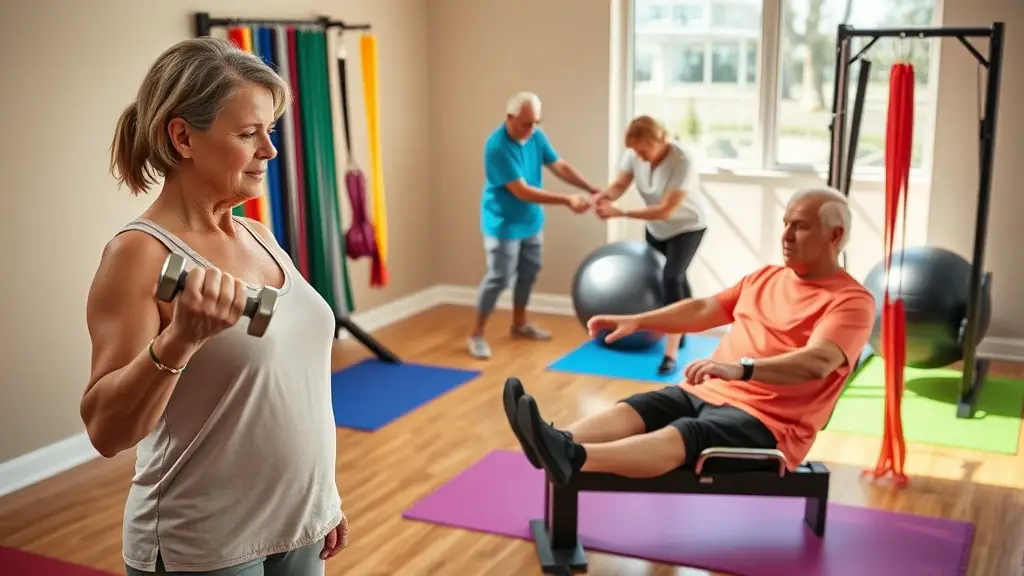
Creating a balanced resistance training routine becomes essential for maximizing benefits and promoting overall health. A well-structured routine incorporates exercise variety and routine progression, ensuring that you target all major muscle groups while also adapting to your changing fitness levels.
Consider the following components for your routine:
- Upper Body Exercises: Engage muscles in the arms, shoulders, and back.
- Lower Body Exercises: Strengthen muscles in the legs and glutes.
- Core Work: Focus on stability and balance through abdominal and back exercises.
- Flexibility Training: Incorporate stretches to maintain range of motion and prevent injury.
Additionally, regular exercise is beneficial for youth, helping to reduce stress and improve concentration, which can also apply to older adults.
Frequently Asked Questions
How Often Should Older Adults Perform Resistance Training Sessions?
You should aim for resistance training sessions at least two to three times a week, following frequency guidelines recommended by health professionals. This frequency helps improve muscle strength, balance, and overall functional ability. It’s essential to allow for recovery between sessions, as this maximizes the training benefits. Incorporating a variety of exercises targeting different muscle groups can enhance your results and contribute to better health outcomes as you age.
Can Resistance Training Help With Arthritis Symptoms?
Yes, resistance training can help with arthritis symptoms. It’s been shown to provide pain relief by strengthening the muscles around your joints, which enhances joint stability. Improved joint strength can reduce the strain on your affected areas, leading to better overall mobility. Regularly engaging in resistance exercises may also improve flexibility and reduce stiffness, making daily activities easier and more comfortable for you. Always consult with a healthcare professional before starting a new exercise regimen.
What Should I Wear for Resistance Training?
What’s the point of resistance training if you’re not dressed for success? You should wear comfortable footwear to support your feet during workouts, preventing any unnecessary strain. Opt for breathable fabrics that allow your skin to breathe and wick away sweat, keeping you cool and focused. Loose-fitting clothing can enhance your range of motion, ensuring you perform exercises effectively. Remember, the right attire can considerably impact your overall training experience and performance.
Is It Safe to Do Resistance Training Every Day?
It’s generally not recommended to do resistance training every day without adequate recovery time. While daily workouts can be beneficial, your muscles need time to repair and grow stronger. Typically, it’s best to allow at least 48 hours before targeting the same muscle group again. Incorporating rest days into your routine can help prevent overtraining and reduce the risk of injury, ensuring you maximize the effectiveness of your resistance training efforts.
How Can I Track My Progress in Resistance Training?
To track your progress in resistance training, consider using training logs to document your workouts. Record the exercises, weights, sets, and repetitions you perform each session. This progress monitoring will help you identify trends over time and assess your improvements. Additionally, noting how you feel during each workout can provide valuable insights into your overall development and recovery. Regularly reviewing your logs allows you to adjust your training plan effectively.




